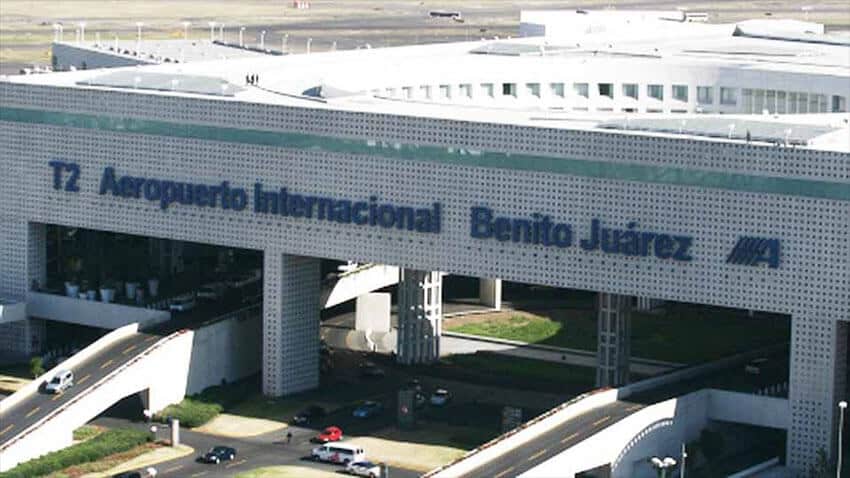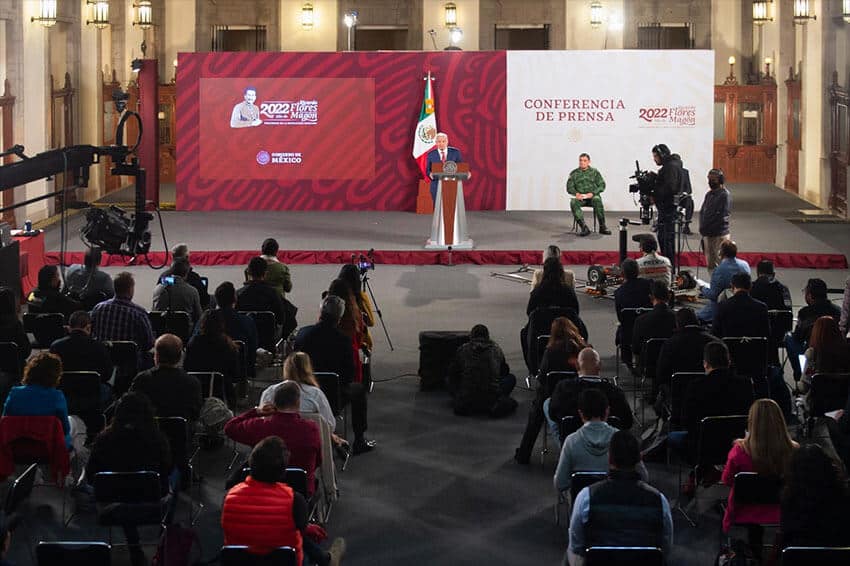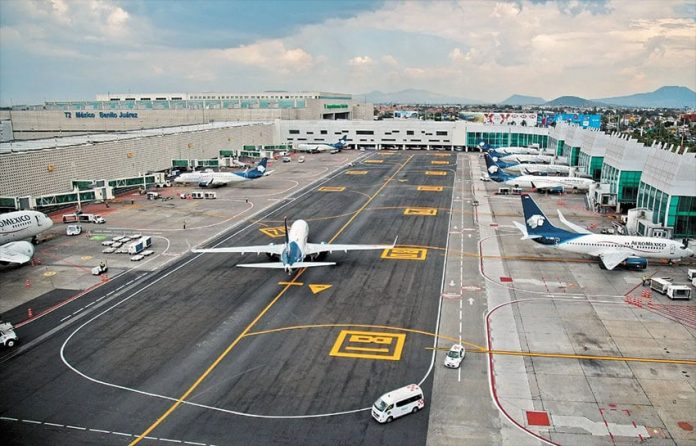The federal government will spend 600 million pesos (US $30.2 million) to repair Terminal 2 at the Mexico City International Airport (AICM), an amount more than 10 times higher than previously announced.
President López Obrador announced the investment Thursday and also said that flights will be reduced to ease pressure on the airport, which has reached saturation point, according to the Federal Civil Aviation Agency.
The president told his morning press conference that the federal government will fund the Terminal 2 work but it will be managed by the Mexico City government. The Institute of Engineering at the National Autonomous University and other structural engineers have assisted the planning of the project, López Obrador said.
His announcement came after the government said in late July that it would spend 46.5 million pesos to repair structural damage in both AICM terminal buildings.

López Obrador said July 25 that Terminal 2 — built during former president Vicente Fox’s 2000-2006 government — is “not very old but has structural damage” and is sinking, a conclusion challenged by the College of Mexican Aeronautics Engineers.
“We’re going to check it and shore it up so that people are protected. … It’s sinking and the land [on which it was built] wasn’t the most suitable. … We have to find a way to shore it up with columns, for safety reasons,” he said.
López Obrador said Thursday that there were in fact two options to deal with the terminal’s problems: “underpin it so that a thorough repair is completed later or a [more immediate] intervention for the medium and long term.”
He said the government chose the second option because it would ensure the safety of people using the terminal. “When they built the terminal they said it would last 50 years but it didn’t hold up because they didn’t do it well,” López Obrador said.

He said he asked Mexico City authorities to take charge of the project because the federal government is overwhelmed with infrastructure work.
“We couldn’t turn to the military engineers, who are the best there is in construction,” López Obrador said, noting that they are already building National Guard barracks, government-owned “well-being” banks and part of the Maya Train railroad.
An unnamed government official who spoke with the newspaper El Economista said it was regrettable that the Terminal 2 project wasn’t assigned to the Ministry of Infrastructure, Communications and Transportation, which has employees with expertise in such work.
Mexico City Mayor Claudia Sheinbaum acknowledged Thursday that her administration will take charge of the project, telling a press conference that the work will take 13 months to complete. She also said that the terminal is sinking and that its foundations need to be reinforced. The repair project will “probably” begin this year, the mayor said.
As for a reduction in flight numbers at AICM, López Obrador said that will occur once the results of a technical analysis become available in November. Deputy Transport Minister Rogelio Jiménez Pons said in May that 25% of flights would be transferred to the new Felipe Ángeles International Airport (AIFA) and the Toluca International Airport over the next 12 months in order to ease pressure on AICM.
López Obrador said Thursday that AICM already handles a lot of flights and passengers before noting that AIFA is ready to take on additional traffic. Built by the military, AIFA opened in March, but only a small number of flights depart and land at the airport on a daily basis. It’s one of the pet infrastructure projects of the president, who canceled the previous government’s partially built airport in Texcoco, México state, after a legally questionable referendum held before he took office.
El Economista noted that the government can reduce operations at AICM but can’t force airlines to add flights at AIFA. López Obrador in April extended an invitation to Aeroméxico, Volaris and VivaAerobús to increase their flights to and from the airport, and they have committed to adding operations in the coming months, but AICM looks set to remain their hub in the Mexico City metropolitan area for the foreseeable future.
Mexican airlines are currently prevented from adding new flights to the United States because Mexico hasn’t recovered the Category 1 aviation safety rating with United States aviation authorities that it lost in May 2021.
Meanwhile, AIFA’s director said Monday that daily flights in and out of the airport would increase from 12 to 46 next Monday with connections to La Paz, Baja California Sur; Mexicali, Baja California; and Huatulco and Puerto Escondido, Oaxaca. Copa Airlines will also begin operating from the new airport and Panama.
With reports from El Economista, Reforma and El Universal
